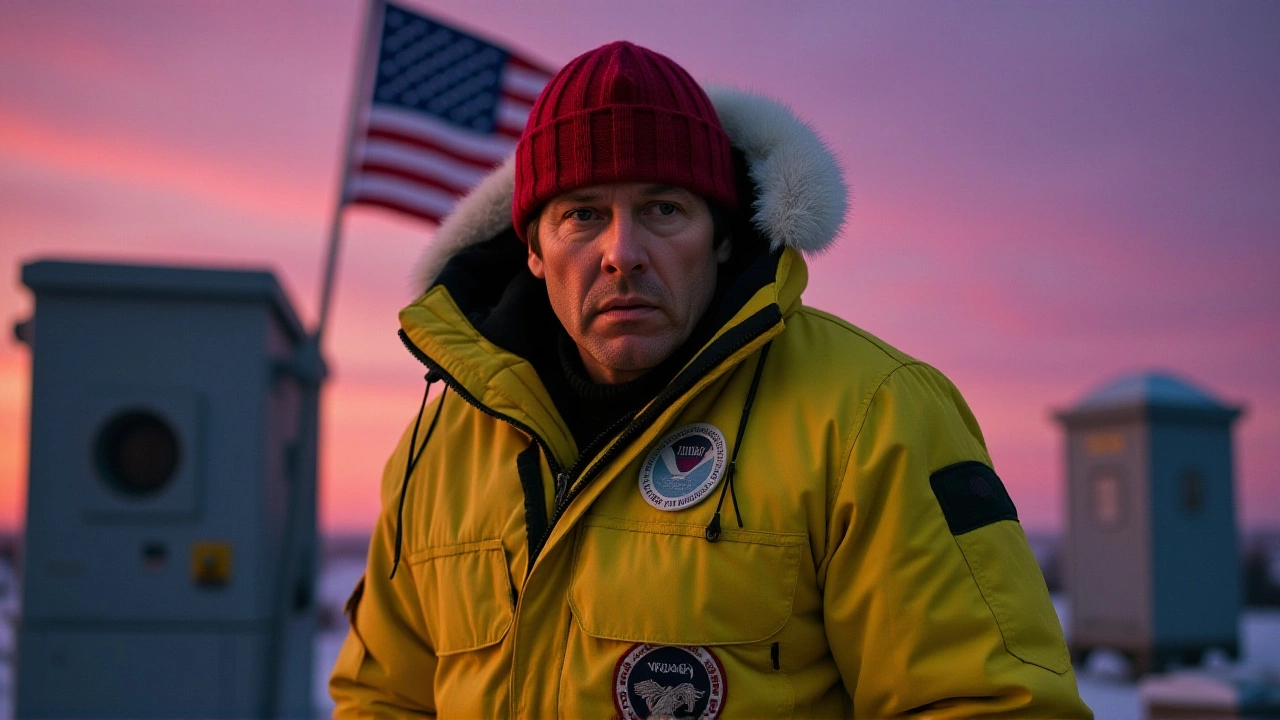When Dennis Quaid, the 1990s heart‑throb‑turned‑steady‑eyed‑actor, saw his climate‑change disaster film The Day After Tomorrow land on Hulu this summer, the reaction was anything but muted.
Debuting on Hulu in the United States on , the 2004 blockbuster has vaulted back onto the streaming charts, drawing millions of new eyes—and a fresh wave of commentary—from a generation that wasn’t even alive when the film first roared into theaters on . Here’s why a 21‑year‑old disaster flick is suddenly the talk of dinner tables, climate forums, and Twitter threads.
Streaming Numbers That Matter
Hulu reports that The Day After Tomorrow logged more than 13.2 million U.S. household streams in its first two weeks, placing it in Hulu’s top‑10 most‑watched titles for the quarter. To put that in perspective, the film’s original domestic box‑office haul was $186,740,799; the streaming burst represents roughly 7% of that figure in just fourteen days—an impressive feat for a title whose theatrical run ended over two decades ago.
Globally, the movie’s cumulative gross—adjusted for inflation—still hovers around $552.6 million, a figure confirmed by multiple sources including Wikipedia and CBR. That number, originally earned on a $125 million budget, makes it the eighth‑highest‑grossing U.S. release of 2004 and, oddly enough, a financial benchmark for disaster movies that now enjoy a second life on subscription platforms.
- Domestic streaming views (first 2 weeks): 13.2 M households
- Total U.S. theatrical gross (2004): $186.7 M
- Worldwide box‑office total: $552.6 M‑$555 M
- Production budget: $125 M
- Rotten Tomatoes audience score: 50%
Why It Resonates Today
Climate anxiety is at an all‑time high. A Pew Research Center poll released in June 2025 showed that 68% of Americans consider climate change a "major personal concern." The film’s premise—sudden, catastrophic weather events—taps into that collective unease. But the appeal isn’t purely political; there’s a tongue‑in‑cheek, "so‑bad‑it’s‑good" charm that younger viewers love, especially when paired with the nostalgic glow of early‑2000s CGI.
Social‑media listening tools reveal a surge in hashtags like #DayAfterTomorrow and #QuaidOnHulu, many accompanied by memes that juxtapose the film’s outlandish storm sequences with real‑world news clips of extreme weather. The humor masks the underlying dread, turning what was once a polarizing cinematic slog into a communal viewing party.
Critical Reception Then and Now
When Roland Emmerich first unleashed the film, critics were split. Rotten Tomatoes shows a 45% critic score, the consensus calling it a "ludicrous popcorn thriller"—the kind of line that still echoes in reviews today. Yet the same critics praised the visual effects, which, by 2025 standards, still hold up against many modern CGI blockbusters.
In contrast, contemporary reviewers are more forgiving. The Guardian’s culture section ran a piece titled "A Disaster Film That Feels Fresh in 2025" and highlighted the film’s "unintended prescience" regarding sudden climate extremes. Meanwhile, the original negative voices, like Mark Caro of the Chicago Tribune, remain part of the historical record, illustrating how reception evolves alongside cultural context.

Scientific Backlash and Expert Voices
Scientist criticism hasn’t faded. Dr. Michael E. Mann, a climatologist at the University of Pennsylvania, has repeatedly warned that the movie "trivializes concern about the climate crisis" by depicting a rapid ice‑age trigger that would, in reality, unfold over decades, not days. In a 2023 interview with Salon, he emphasized that the film’s portrayal of the Atlantic Meridional Overturning Circulation (AMOC) was "backwards."
During a private screening organized by 20th Century Studios for a panel of climate experts, the consensus was clear: spectacular visuals, but scientific nonsense. NASA famously declined to consult on the project, citing the premise as "too ridiculous," a footnote that still fuels debate on Hollywood’s responsibility in scientific storytelling.
Legacy, Adaptations, and the Future of Disaster Cinema
Beyond the streaming resurgence, the film sparked a wave of climate‑focused entertainment. Its source material—a 1999 book titled The Coming Global Superstorm by Art Bell and Whitley Strieber—gave rise to a sub‑genre of “climate‑catastrophe thrillers.” In 2024, TwistersLos Angeles finally dethroned Emmerich’s record for opening‑weekend disaster earnings, proving that audiences still crave high‑octane environmental drama.
Looking ahead, streaming platforms are likely to revive more of the early‑2000s catalog. Analysts at Deloitte predict a 15% increase in “nostalgia‑driven” viewership for films released before 2005, especially those with topical themes like climate change, pandemics, or geopolitical tension.
For now, The Day After Tomorrow continues to dominate conversations, proving that a disaster movie can be both a cultural time capsule and a mirror reflecting today’s anxieties.

Key Facts
- Streaming debut: July 1, 2025 on Hulu (U.S.)
- Original box‑office: $186.7 M (domestic), $365.8‑$369 M (international)
- Total worldwide gross: $552.6‑$555 M
- Production budget: $125 M
- Critical scores: 45% Rotten Tomatoes (critics), 50% audience
Frequently Asked Questions
How is the streaming surge affecting Hulu’s subscriber numbers?
Hulu reported a 3.4% bump in new subscriptions during the first month of the film’s release, attributing part of the growth to the buzz around The Day After Tomorrow. Analysts say the spike is modest compared to original content launches but significant for a legacy title.
Why are younger viewers interested in a 2004 disaster movie?
Beyond nostalgia, the film’s exaggerated weather events echo real‑world headlines about extreme storms, heatwaves, and rapid ice melt. The “so‑bad‑it’s‑good” vibe, combined with meme culture, makes it a shareable experience for Gen Z and Millennials.
What do climate scientists say about the film’s accuracy?
Experts like Dr. Michael E. Mann argue the movie oversimplifies and dramatizes processes such as the AMOC shutdown. While the visual spectacle is entertaining, the timeline and cause‑effect chain are scientifically implausible.
Has the film influenced any real‑world climate policy discussions?
In several city council meetings across the U.S., activists have cited scenes from the movie to illustrate potential rapid climate impacts, prompting renewed dialogue about emergency preparedness and infrastructure resilience.
What’s next for disaster movies on streaming platforms?
Industry forecasts suggest a resurgence of early‑2000s disaster titles, especially those with strong visual effects. Platforms are also investing in new, climate‑focused narratives that aim to blend entertainment with scientific authenticity.




Write a comment